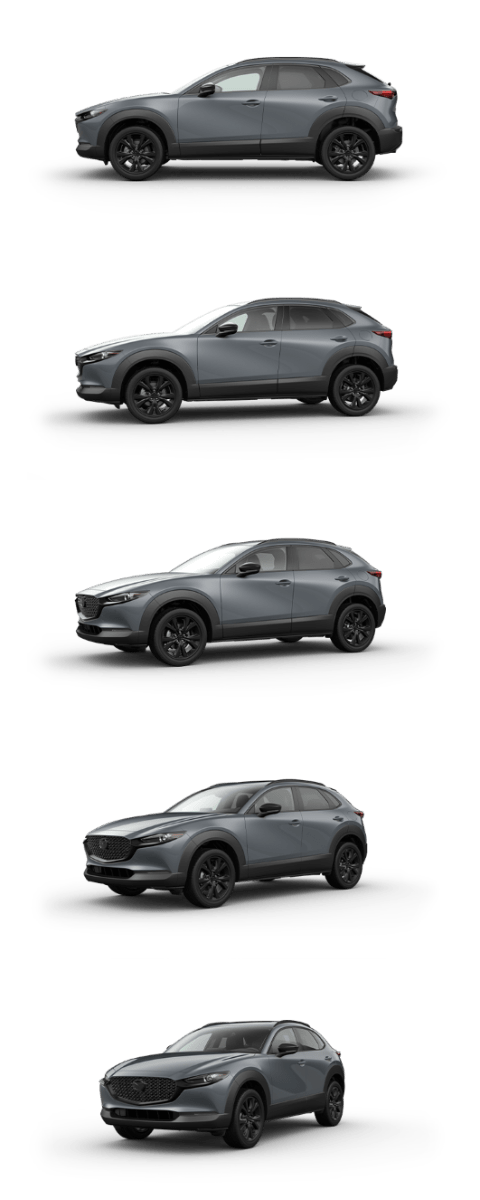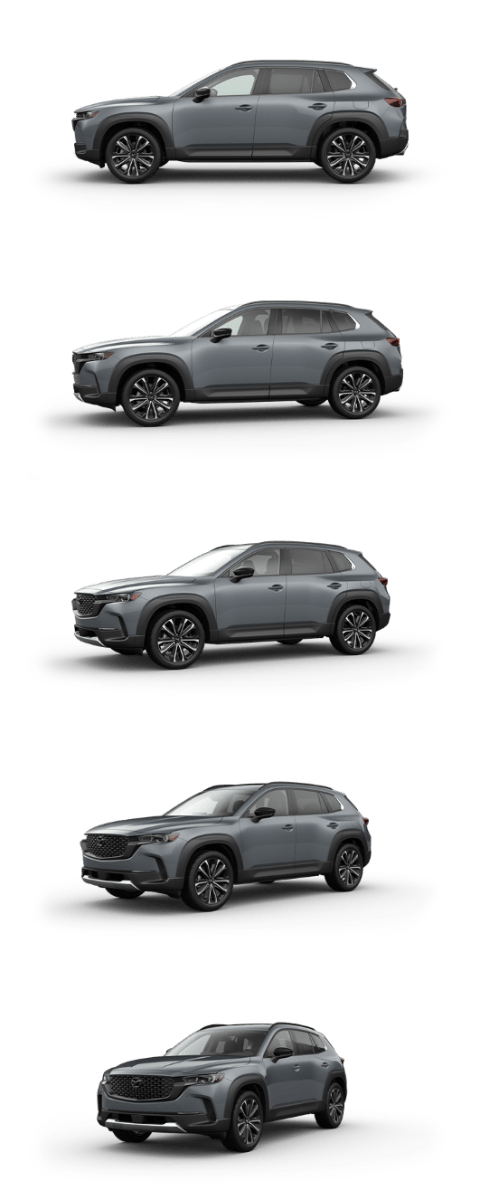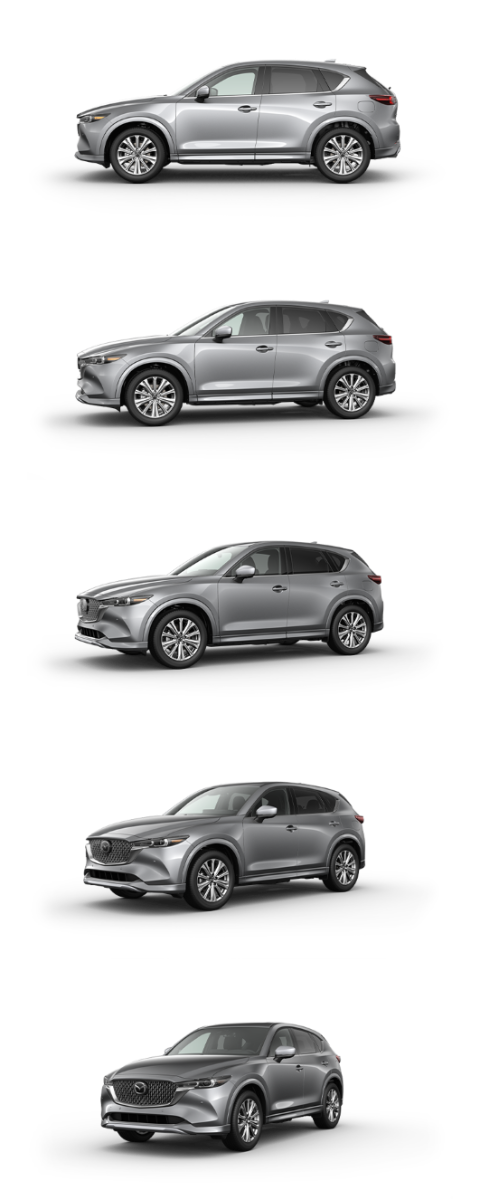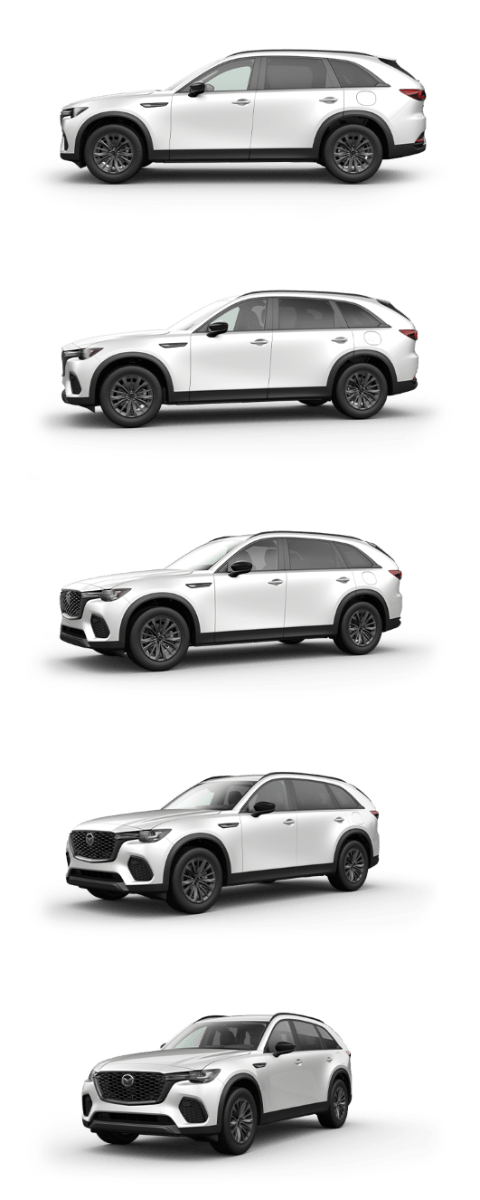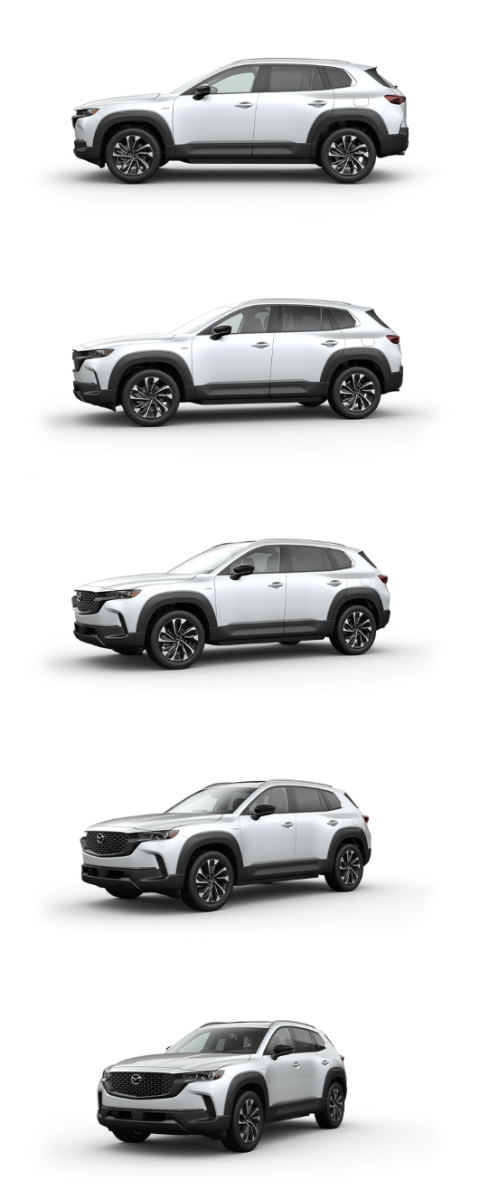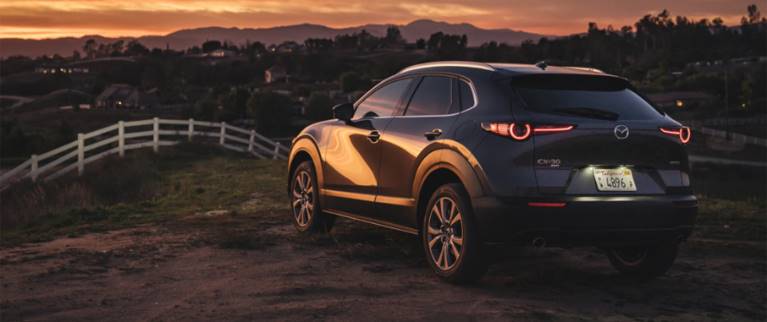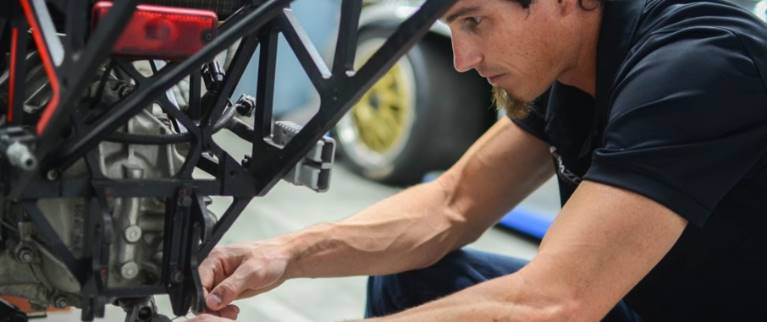How to Winterize a Car: 5 Easy Steps, Plus Winter Preparation Checklist and Additional Tips
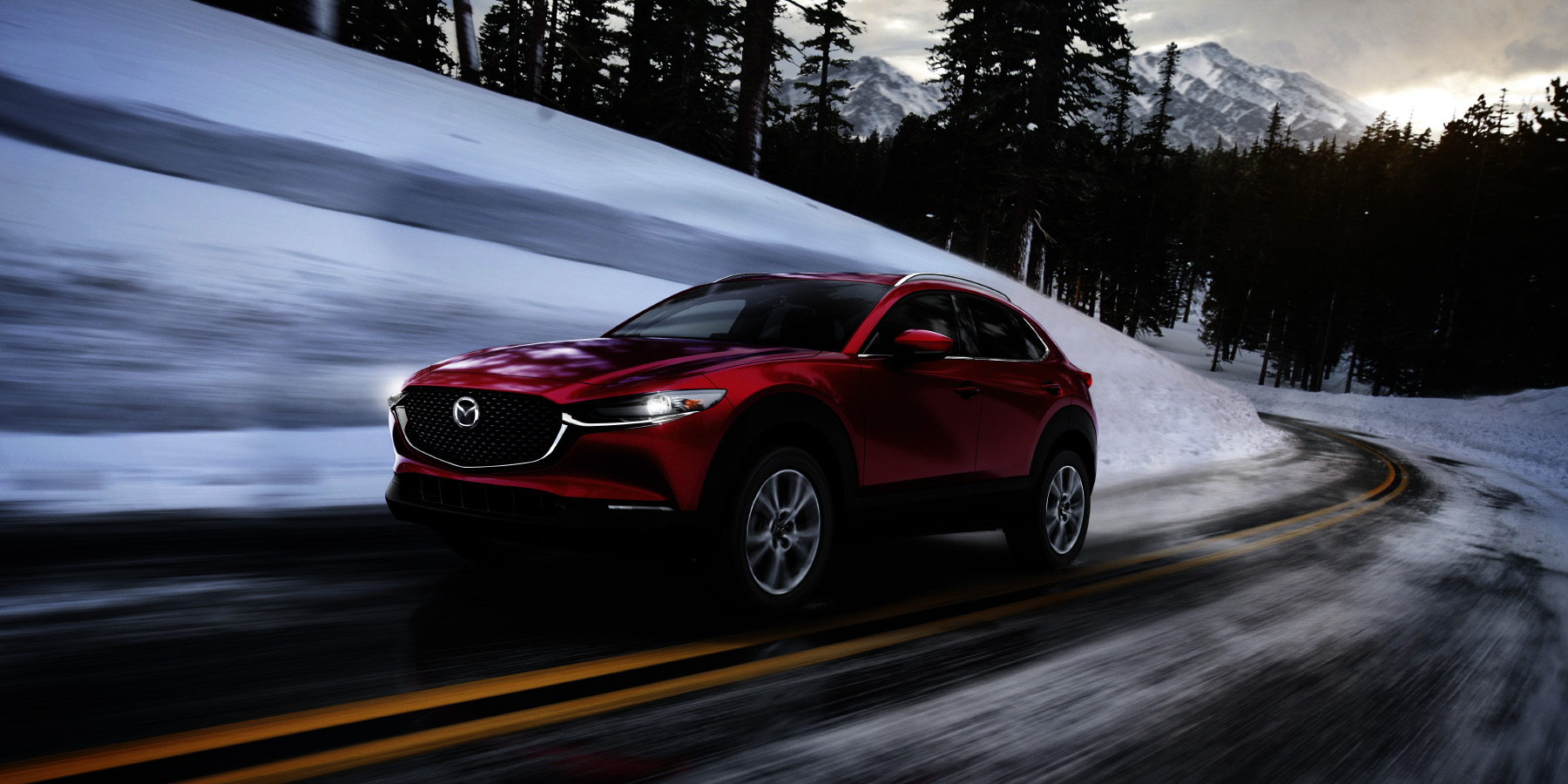
Winter conditions can be hard on your vehicle. While defensive driving is crucial for keeping you and your car safe in snowy and icy conditions (and at all times of year), there are additional steps you can take to help better prepare your vehicle for winter. Let’s take a look at winterization, why it’s important, and how you can do it for this winter.
What does it mean to winterize a car?
Winterization, or the process of winterizing your vehicle, means preparing various aspects (like tires, engine, emergency kits, etc.) for colder weather and snowy conditions. The goal is for your car to be ready before temperatures drop, so it stays reliable, and comfortable through the winter months. Winterizing your car generally covers three key areas (we’ll discuss the specifics of how to winterize further down):
• Reduce risk of failure: Prepare vehicle components that are particularly vulnerable to cold, such as the battery, belts, and hoses.
• Improve winter safety: Make sure that systems are in place to maintain traction, stopping distance, and visibility (e.g., tires and windshield wipers).
• Prepare for potential emergencies: Keep supplies and tools in your vehicle in case it breaks down, and be aware of procedures to keep things working.
Note: Winterization can also be used for other vehicles like trailers and RVs, but we’ll be focusing on winterizing cars in this article.
Do you need to winterize your car?
Not everyone needs to winterize their car, but those who drive in cold temperatures, ice, snow, or frequent freeze-thaw cycles should perform this process. This is because winter conditions materially increase the risk of crashes and mechanical strain on your vehicle. In fact, NHTSA emphasizes that snowy and sleet conditions are associated with an increased number of crashes, so preparation can significantly improve safety.
Cold weather also reduces battery cranking power and changes how tires, fluids, and electronics behave, potentially leading to unexpected failures (especially if you aren’t used to driving in these conditions). Even if for drivers living in mild-winter climates, rare freezes might be enough to make winterization worth the time, although you can likely get away with simple checks of your tires, lights, fluids, etc.
Note: EVs and hybrids have special winter considerations due to their batteries, so we’ll cover this in its own section below.
How to winterize a car
1. Take your car to get serviced
Entrusting a mechanic with a comprehensive inspection ensures that your vehicle is in optimal condition for winter. Mechanics will assess the following:
• Battery: Cold temperatures can cause the battery to work harder as chemical reactions slow down and more demands are placed on the electrical system, causing the battery to deplete more rapidly. During a professional service visit, mechanics will evaluate the battery's state of charge and ensure it's primed for winter use.
Note: EV batteries also work harder in cold conditions, and cold weather can reduce your EV’s typical range. Read our article on EV maintenance considerations para obtener más información.
• Brakes: Mechanics will assess the brake pads, rotors, drums, and fluid levels. Keeping your brakes in top condition is vital for maintaining proper braking performance in nearly any weather, especially icy or snow-covered roads.
• Coolant system: The coolant system prevents fluids within the engine from freezing in cold temperatures — thus the term “antifreeze.” Mechanics will inspect the radiator and hoses for any leaks and ensure the coolant is at the appropriate level. They may recommend a specific type of antifreeze that works best for your vehicle, use, and climate.
• Oil and fluid levels: Oil is the lifeblood of a gas-powered vehicle, but cold temperatures cause oil to thicken. Having the correct oil will help the engine function properly for longer and start a little easier. Mechanics will check the oil's viscosity and may suggest switching to winter-weight oil, which flows better in cold conditions. Besides oil, they will also examine other fluid levels, like the transmission, brake fluid, power steering, and washer fluid to verify that they are at optimal levels and free of contaminants.
• Belts and hoses: Belts and hoses can become brittle, especially in cold conditions. A thorough inspection will identify any signs of wear, cracks, or potential breakage.
• Light bulbs: While many cars will alert the driver if a bulb is out, a quick walkaround will ensure they are all working for the darkest time of year.
2. Change your tires to winter tires
Winter tires are specifically designed with precise treads and compounds for better traction on snowy or icy roads. Combining winter tires with an all-wheel-drive (AWD) system provides optimal grip, ensuring your vehicle accelerates confidently on slippery surfaces.
The enhanced stability and reduced stopping distances provided by winter tires can be lifesaving, making winter tires more than worth the investment for those regularly facing winter's challenges. (While you’re addressing tires, check the spare if your car has one.)
3. Change your wipers / install winter wipers
Windshield wipers help provide visibility in less-than-ideal driving conditions, so you’ll want to make sure they’re in good shape before the temperature drops. While standard wipers can simply be replaced for improved efficiency, specialized winter wipers (sometimes called “beam blades”) are designed with protective rubber shells that combat snow and ice buildup. Heated wipers, equipped with elements to melt away ice and snow, are a more advanced option.
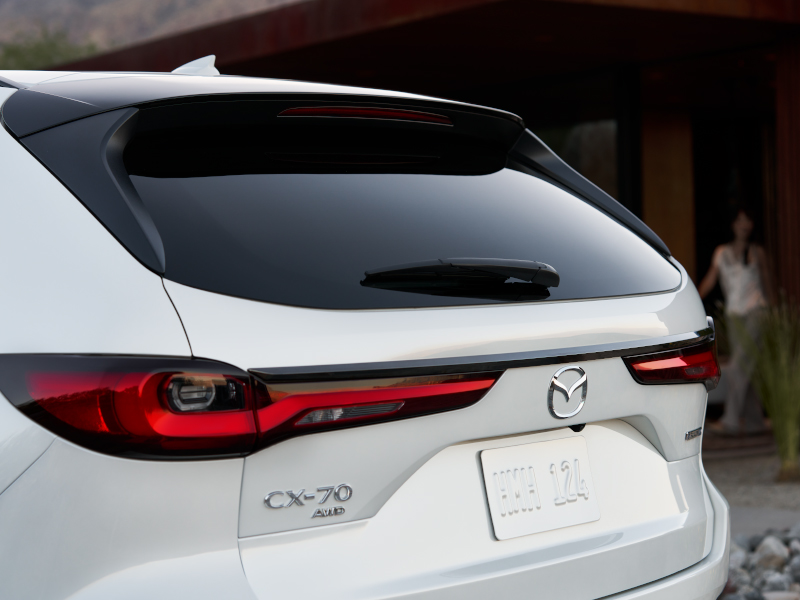
4. Purchase extra washer fluid for the season
Having plenty of washer fluid can be a lifesaver when roads spray salt and muck across your windshield. Plus, all the slush means you’ll probably be using more of it. Opt for a winter-specific product formulated with methyl alcohol for a lower freezing temperature so that it won’t freeze upon contact with the cold windshield or within the reservoir itself.
5. Prepare an emergency winter kit
Organizing an emergency winter kit for your vehicle ensures you have essential tools and resources at your fingertips should you find yourself in a potentially dangerous situation. Equip your car with:
● Jumper cables
● Tire care kit (pressure gauge, compact inflator, chains if they are required on your route)
● Ice scraper & brush
● Flashlight (or backup phone battery)
● First-aid kit
● Road flares
● Blankets
● Gloves
● Extra warm clothing
● Pack of matches
● Non-perishable food & water
● Sand or kitty litter for traction
● Shovel
● Extra antifreeze
● Silicone spray, door-lock lubricant, or door antifreeze
While it may seem like a hefty kit, it’s better to be over-prepared than under-prepared. For easy packing, keep everything in the same duffel bag in the trunk of your car, then store it in your garage or designated storage space once the winter season is over.
Is winterizing an electric car different?
Yes. While the core purpose and processes of winterization are the same, electrified vehicles have some additional considerations and differences in how you prepare certain components. The same steps we discussed above are still important, such as winter tires for traction, topping up winter washer fluid, packing an emergency kit, etc. However, cold temperatures reduce battery capacity y can slow down the charging process, so your biggest priority should be maintaining battery condition and charge levels. This means using grid power while your car is still plugged in, instead of battery power to heat up the cabin, as well as charging more frequently instead of waiting to fully recharge when your battery’s state of charge is close to zero.
How to winterize a car for storage
Our focus so far has primarily been on winterizing a car that will be driven throughout the winter. That said, some people store their vehicles during the winter, requiring a different type of winterization. Storage winterization is focused on preventing degradation, corrosion, battery failure, and even unwanted animals making their nests while your car is idle. The specifics of your process will depend on the environment that the vehicle is being kept in (temperature-controlled vs. outdoor, accessible vs. locked up), but here’s a basic guide to winterize it for storage:
1. Clean the interior and exterior of dirt, salt, food, and moisture (these can accelerate rust or attract rodents).
2. Fill the fuel tank and add fuel stabilizer (this prevents gasoline from oxidizing and clogging the fuel system).
3. Change your oil and filter before storage (used oil often contains contaminants and acids that can harm internal engine components over time).
4. Top off coolant, brake fluid, and (freeze-resistant) washer fluid.
5. Inflate your tires to the recommended pressure (or slightly higher) to avoid flat spots when you take the car back out of storage.
6. Disconnect the battery or hook it up with a battery maintainer to prevent discharge.
7. Take off the parking brake and use wheel chocks to avoid seized brake calipers.
8. For outdoor storage, use a breathable car cover that won’t trap moisture.
Additional tips to keep your car running smoothly all winter
Even after going through the above checklist, your vehicle will still require monitoring and maintenance throughout the entire winter season.
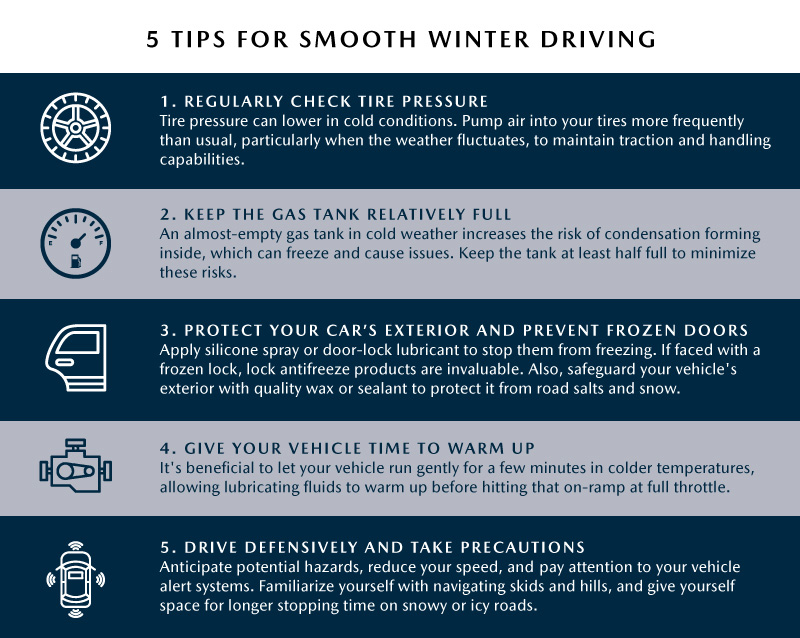
1. Regularly check tire pressure
The air in your tires becomes cold and dense in the winter, which lowers the pressure. This means you may have to pump air into your tires more frequently than usual, particularly when the weather fluctuates. Otherwise, you risk losing traction and handling capabilities.
2. Keep the gas tank relatively full
An almost-empty gas tank in cold weather increases the risk of condensation forming inside. This moisture can freeze, blocking fuel lines and causing starting problems. Keeping the tank at least half full minimizes these risks.
3. Protect your car’s exterior and prevent frozen doors
Frozen locks and doors are a common winter nuisance. Preventive measures, such as applying silicone spray or door-lock lubricant, can stop them from freezing in the first place. If faced with a frozen lock, lock antifreeze products are invaluable.
Beyond the doors, safeguarding your vehicle's exterior with quality wax or sealant acts as a protective barrier against the corrosive effects of road salts and abrasive snow.
4. Give your vehicle time to warm up
While modern engines have reduced the need for extensive warm-ups, it's still beneficial to let your vehicle run gently for a few minutes or miles in colder temperatures. This allows lubricating fluids to warm up before hitting that on-ramp at full throttle.
5. Switch to AWD (if you have it)
6. Drive defensively and take precautions
Driving in winter demands a defensive driving approach. You should anticipate potential hazards, reduce your speed, and be prepared for unfavorable weather conditions. Avoid sudden braking, acceleration, or steering maneuvers. Posted speed limits are for ideal weather conditions, not all-weather conditions. Familiarize yourself with techniques such as steering into skids (turning your wheel in the direction you want the front wheels to go), knowing what gear to drive in, navigating hills, and extending your following distance, given the longer stopping time on snowy or icy roads.
Make sure that you pay attention to the visual, auditory, and haptic alerts generated by your car’s stability control system (if your car has one), as these indicate your tires are approaching or have reached the limits of their grip.
Note: Always remember to buckle up, no matter what the weather conditions present! While today’s vehicles are engineered with advanced airbags and robust body structures, properly wearing your seatbelt is still recommended (and it’s the law).

CONDUCE CON CONFIANZA
Checklist: Prepare your car for winter
1. High-impact checks (do first)
• Tires: Winter tires if needed, check tread and pressure
• Battery: Test, clean terminals, replace if weak
• Antifreeze: Verify concentration and level
2. Visibility & comfort
• Wipers: Replace with winter/beam blades
• Washer fluid: Top off with freeze-resistant fluid
• Heater/defroster: Confirm operation and check cabin air filter
• Lights & cameras: Clean and test all exterior lights and sensors
3. Mechanical & fluids
• Oil: Confirm proper grade per owner’s manual
• Brakes: Inspect pads/rotors; address spongy feel
• Hoses & belts: Check for cracks or brittleness
• Fuel: Keep tank more than half full in extreme cold
4. Traction & recovery
• Traction aids: Carry sand/kitty litter or traction mats
• Snow chains: Have correct size and practice installing
5. Emergency kit (store in car)
• Ice scraper and snow brush
• Small shovel
• Jumper cables/jump pack
• Flashlight and batteries/power bank
• Warm blanket/extra clothing
• Water and nonperishable snacks
• Reflective vest/flares/tow strap
6. Electronics & modern systems
• ADAS sensors/cameras: Keep clear of snow/ice
• EV/Hybrid: Precondition while plugged in and plan for reduced range
7. Parking & storage
• Short term: Clear snow from the roof/hood/exhaust
• Long term: Fuel stabilizer, battery maintainer, inflate tires
Seasonal timeline
| SEASON | ACTION |
| Late Fall (before first freeze) |
• Change to winter tires |
| During Winter | • Maintain proper tire pressures • Clear snow and ice from the car before driving • Monitor battery levels • Monitor fluid levels • Refresh emergency kit (if needed) |
| Spring (after winter) | • Remove winter tires • Clean undercarriage of salt/debris • Check brakes and fluids |
Get Ready for Winter with Mazda
Winter brings its slew of challenges, but with some preparation, you can conquer them all. To start off your to-do list, winterize your car and schedule a service appointment with Mazda.
Related Winter Driving Resources by Mazda
Interested in learning more about safe driving and winterization? Browse these other articles:
• Are Snow Tires Worth It?
• AWD vs. 4WD
• Safety Features to Consider When Buying a Car
• How Do Hot & Cold Temperatures Affect EV Range?
Este artículo está previsto para fines informativos generales únicamente y se basa en la última información de la competencia disponible al momento de la publicación. La información incluida aquí está sujeta a cambios sin previo aviso y no impone obligación alguna a Mazda. Revisa diversos recursos antes de tomar una decisión de compra. Visita el centro de recursos para leer más artículos.



